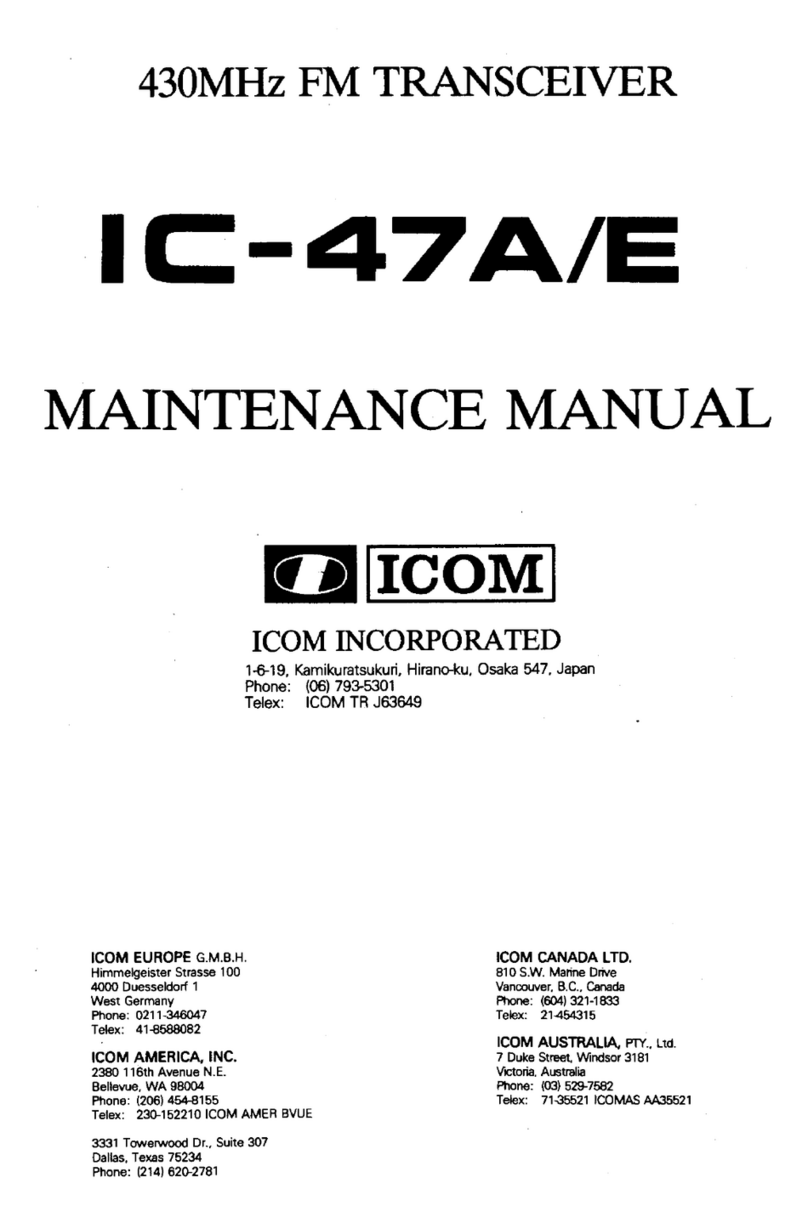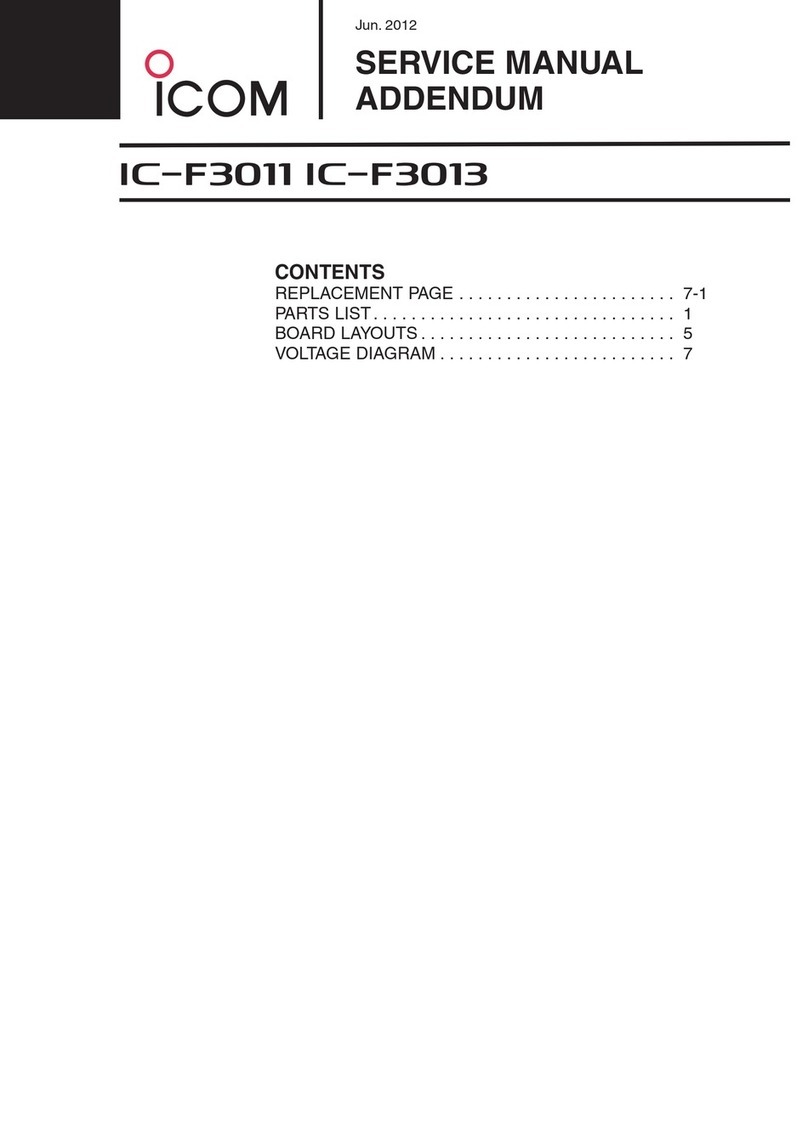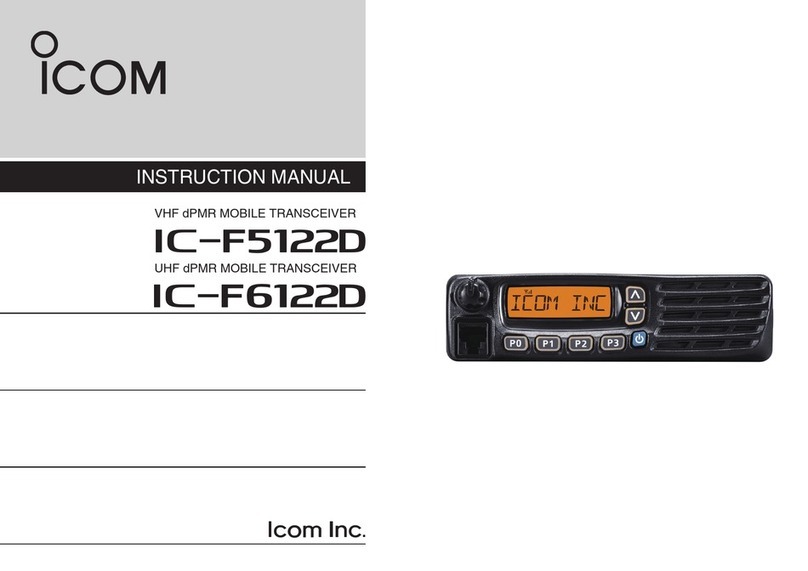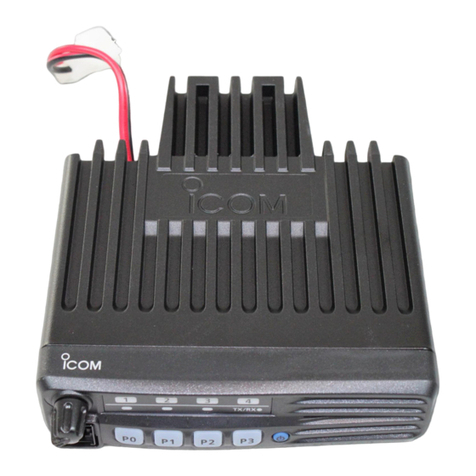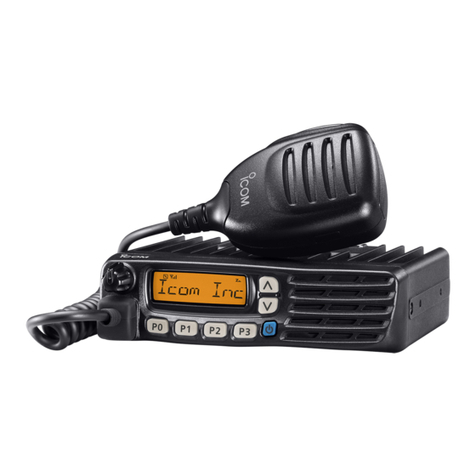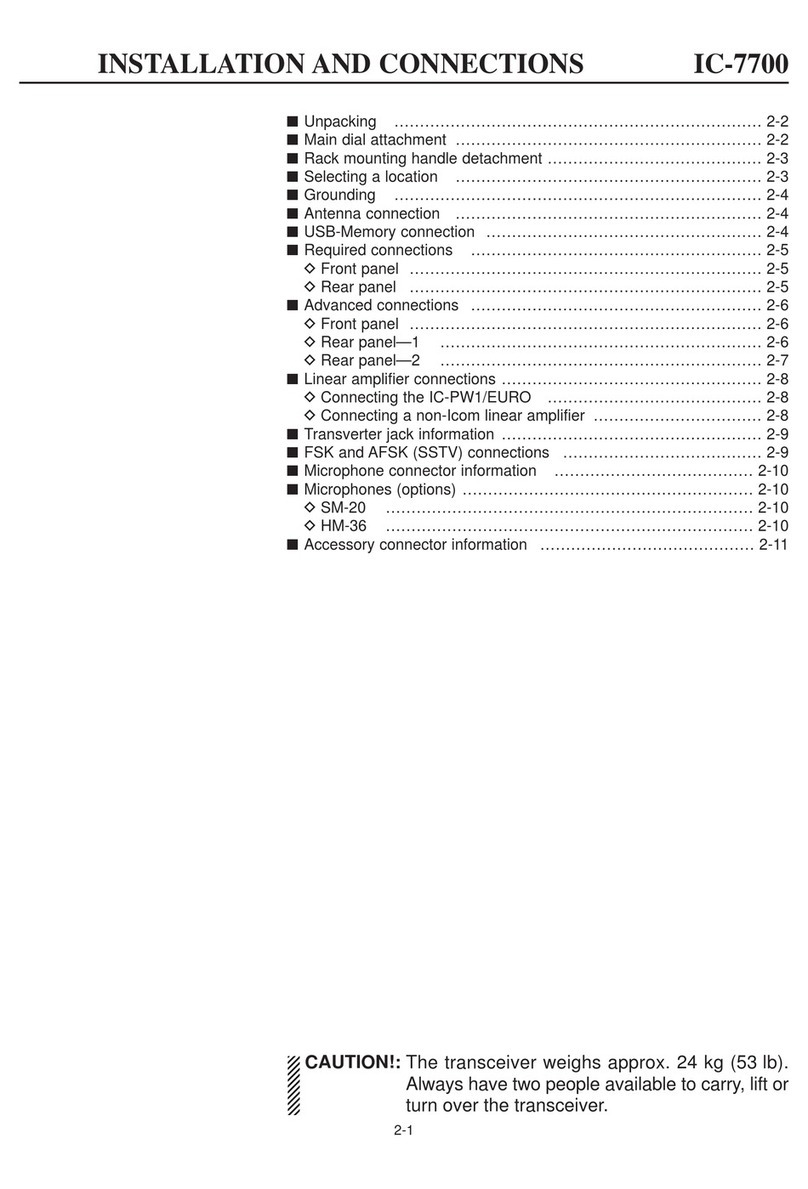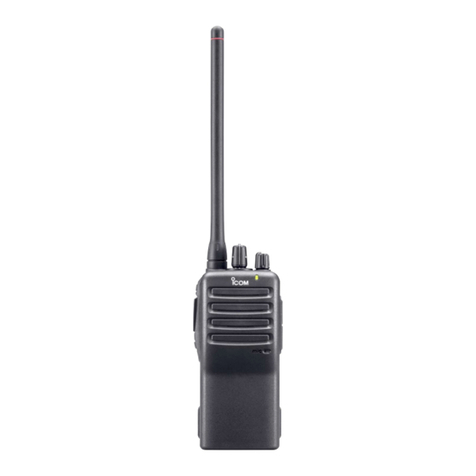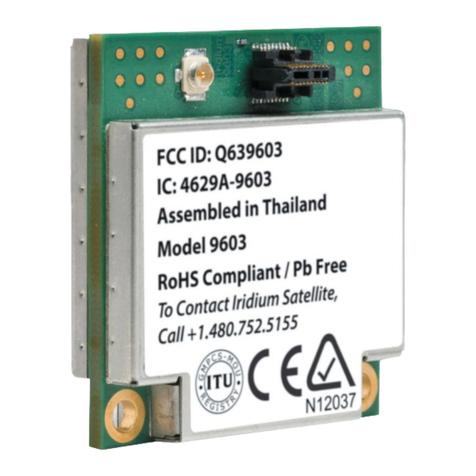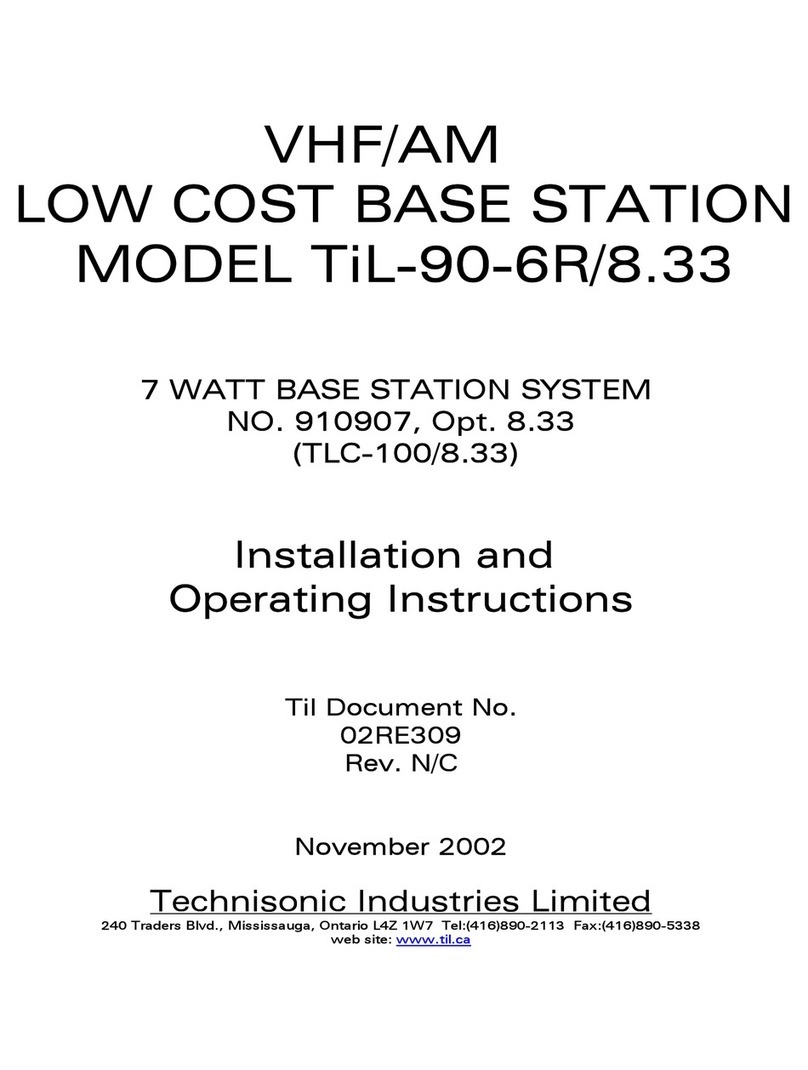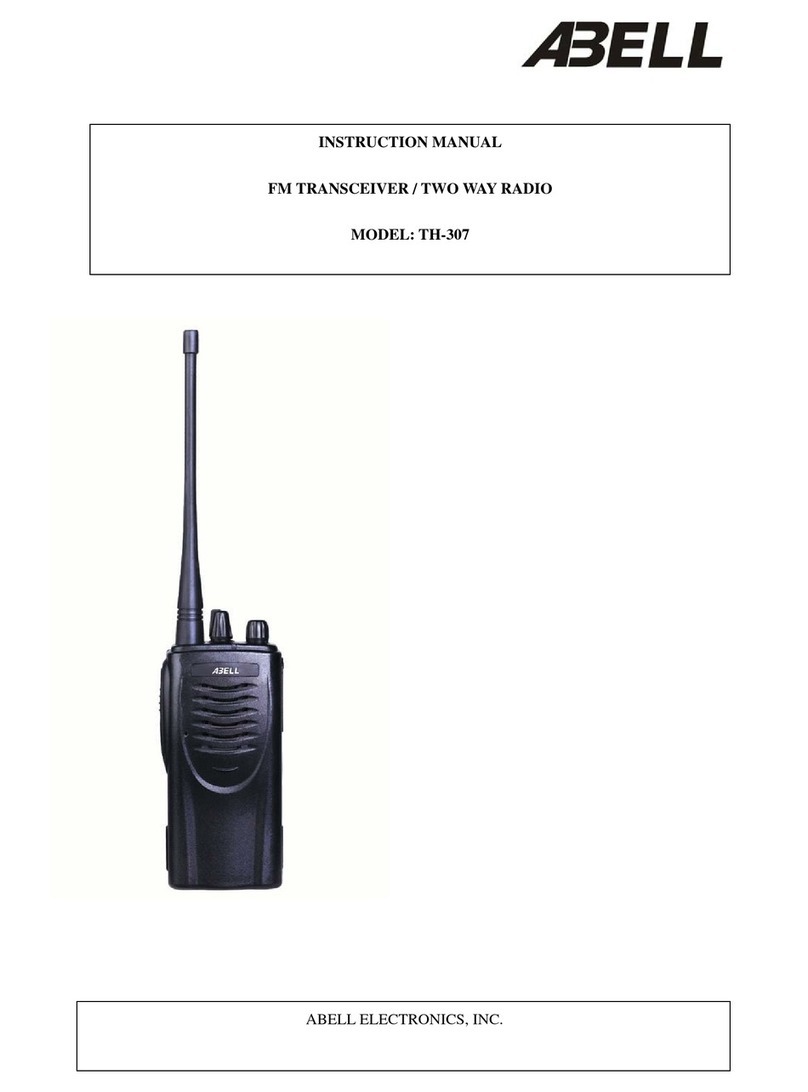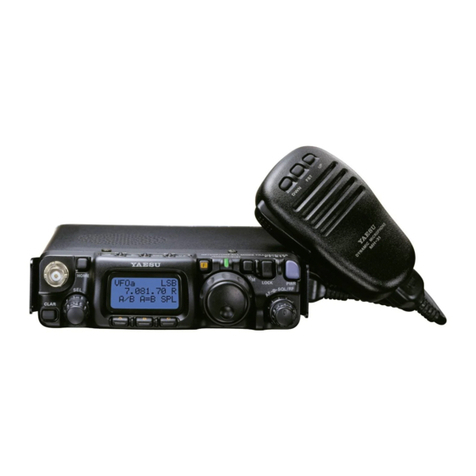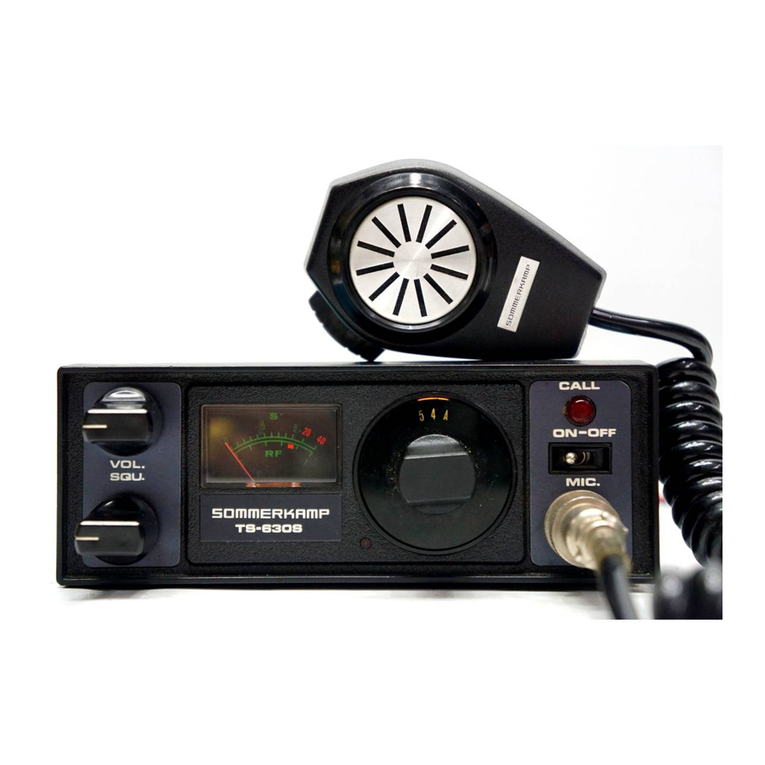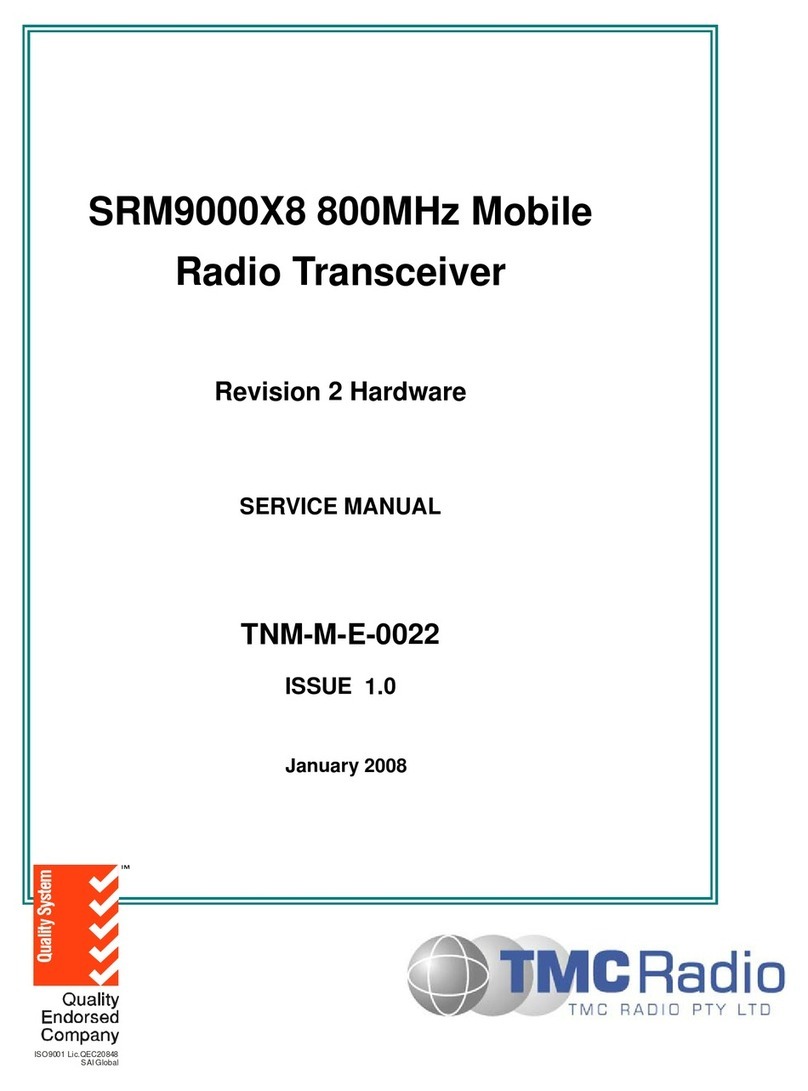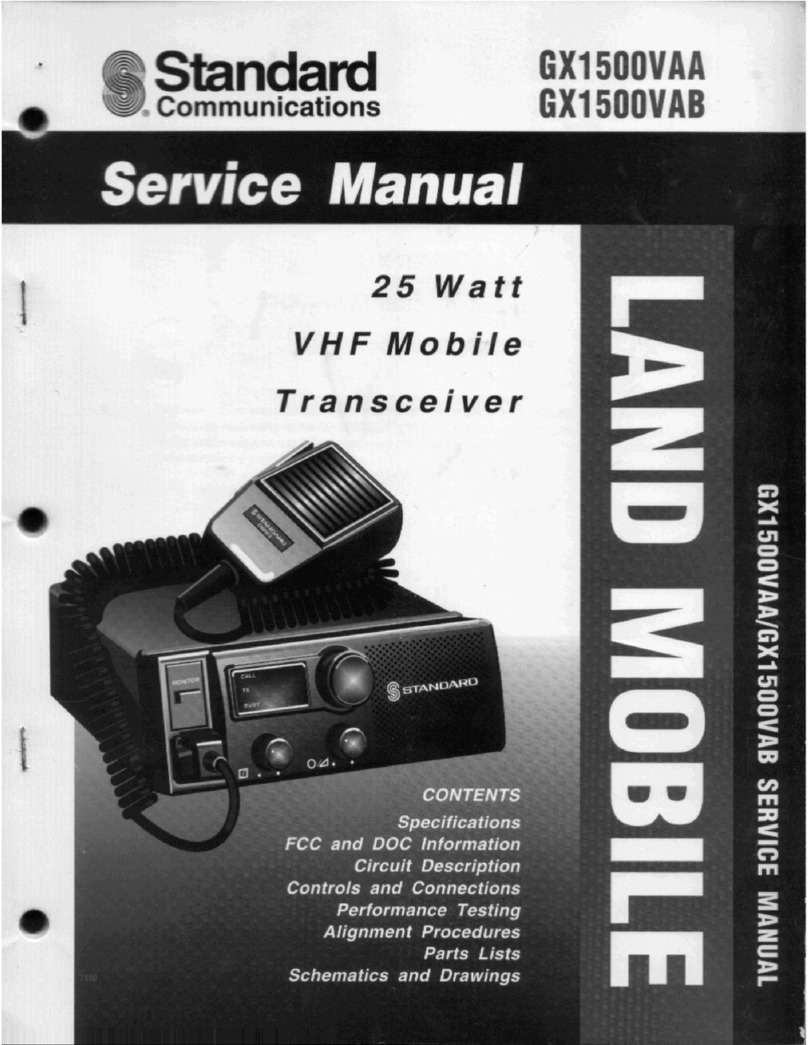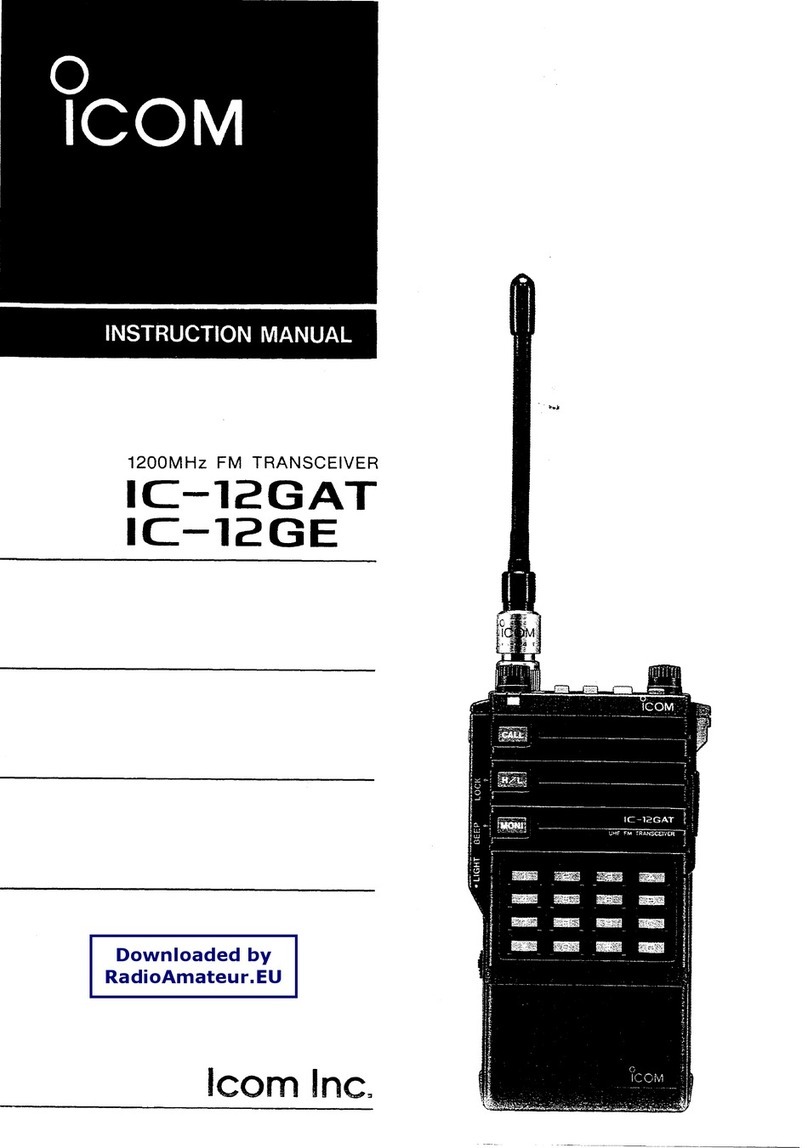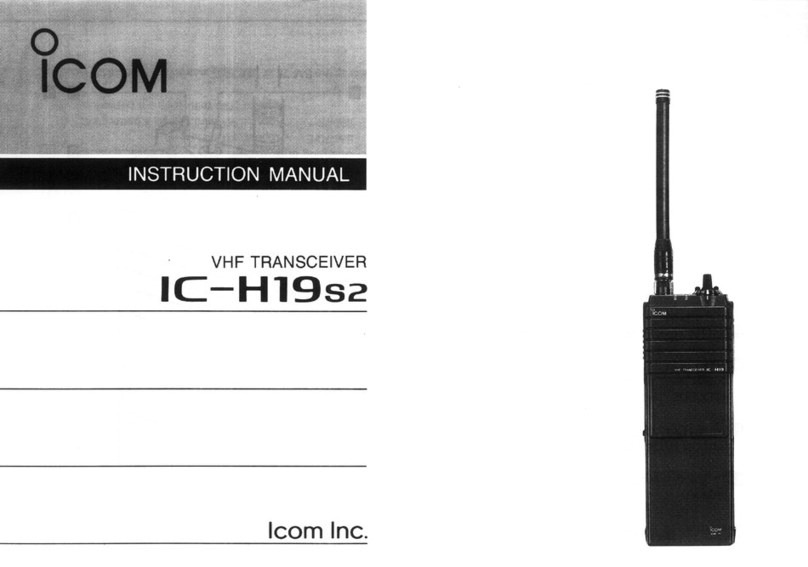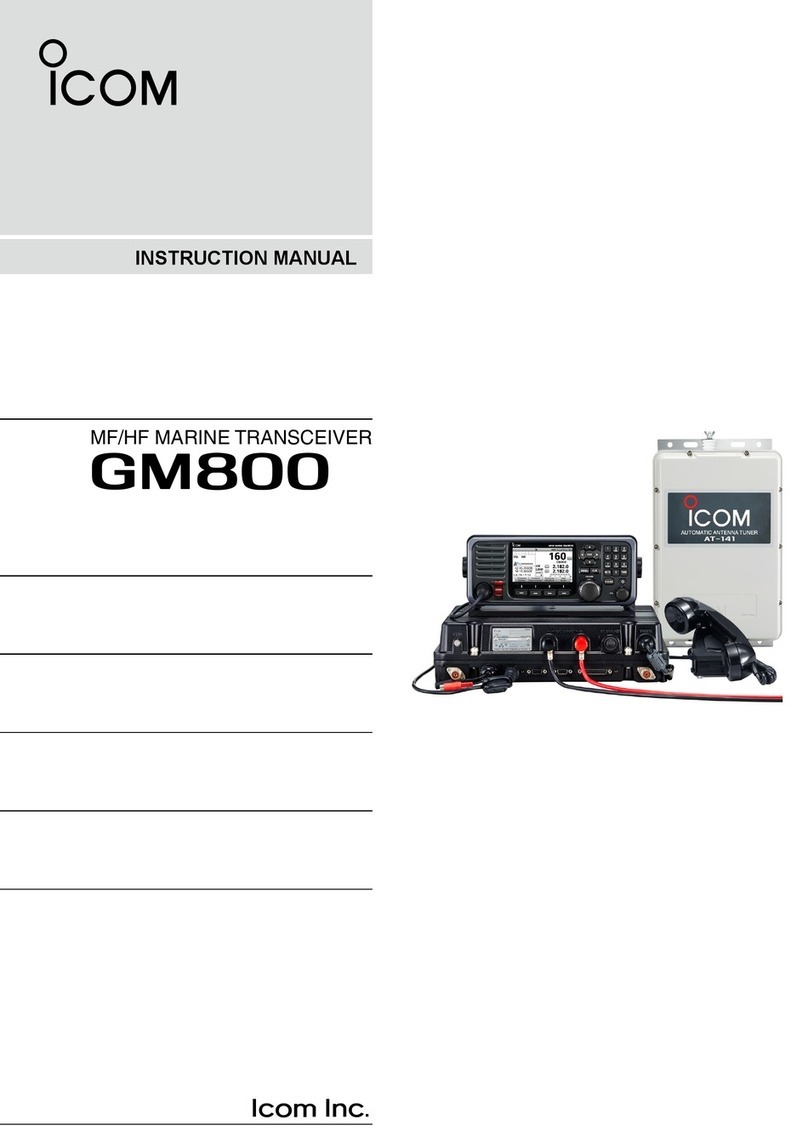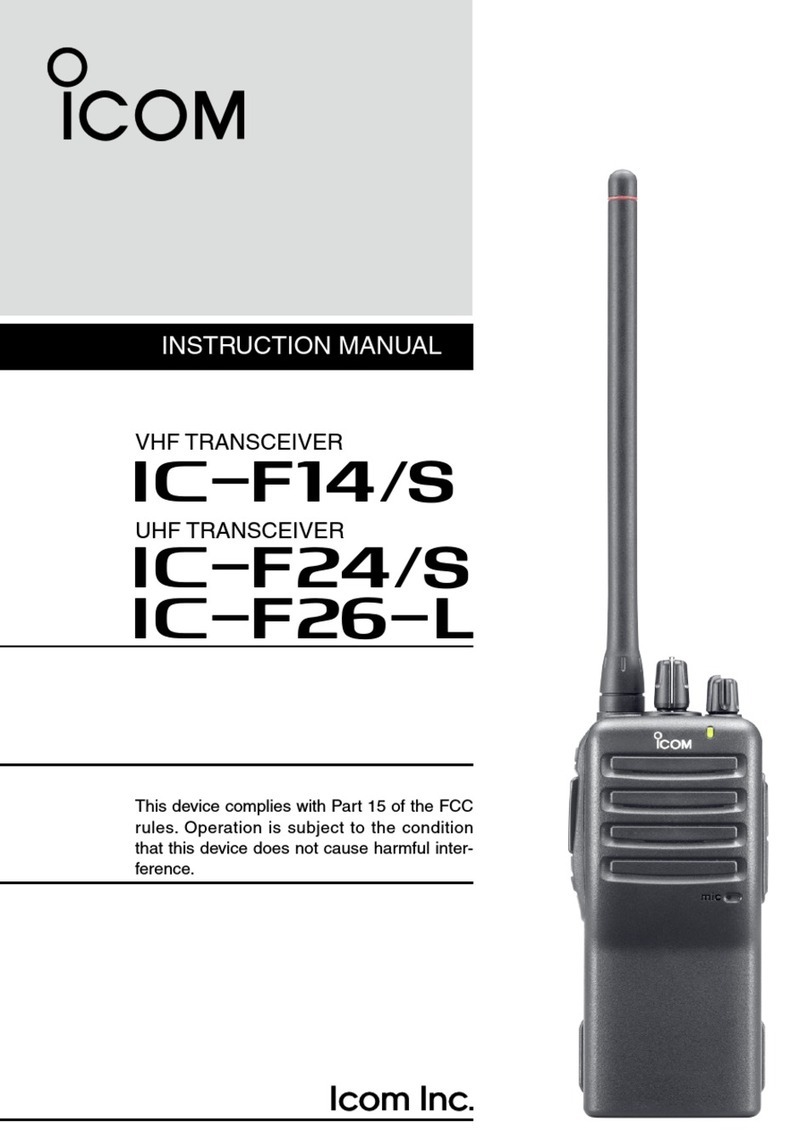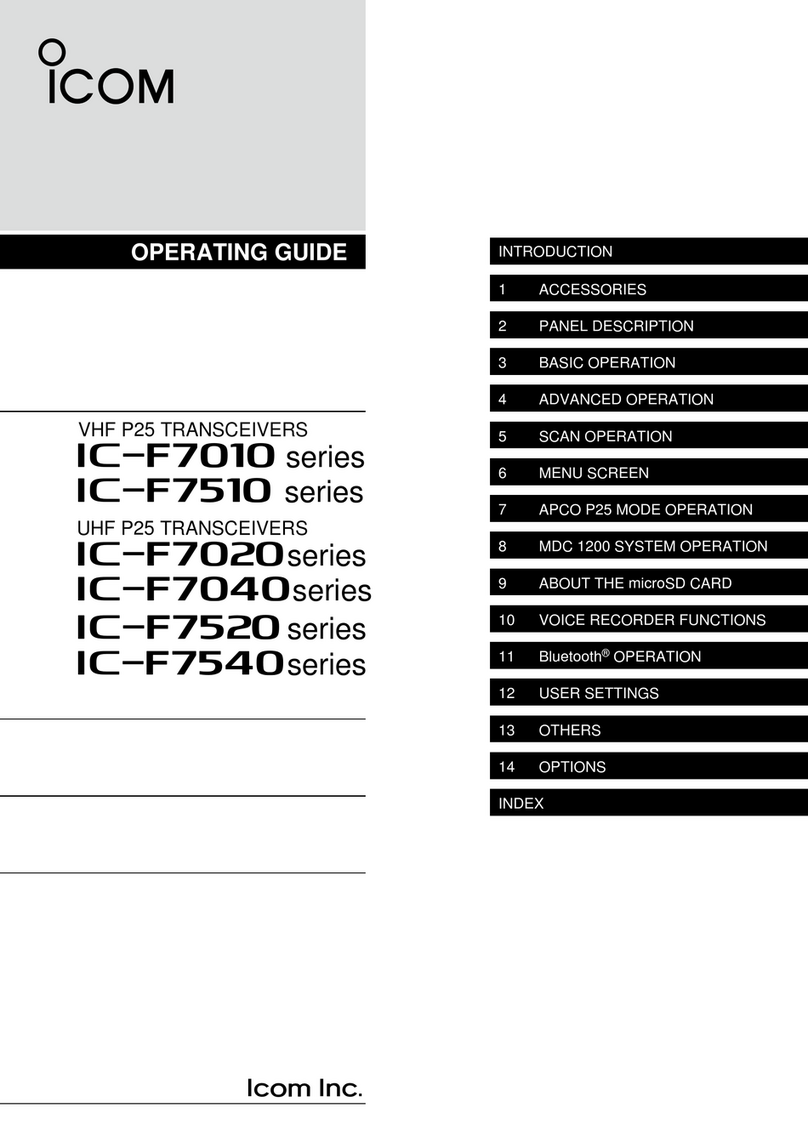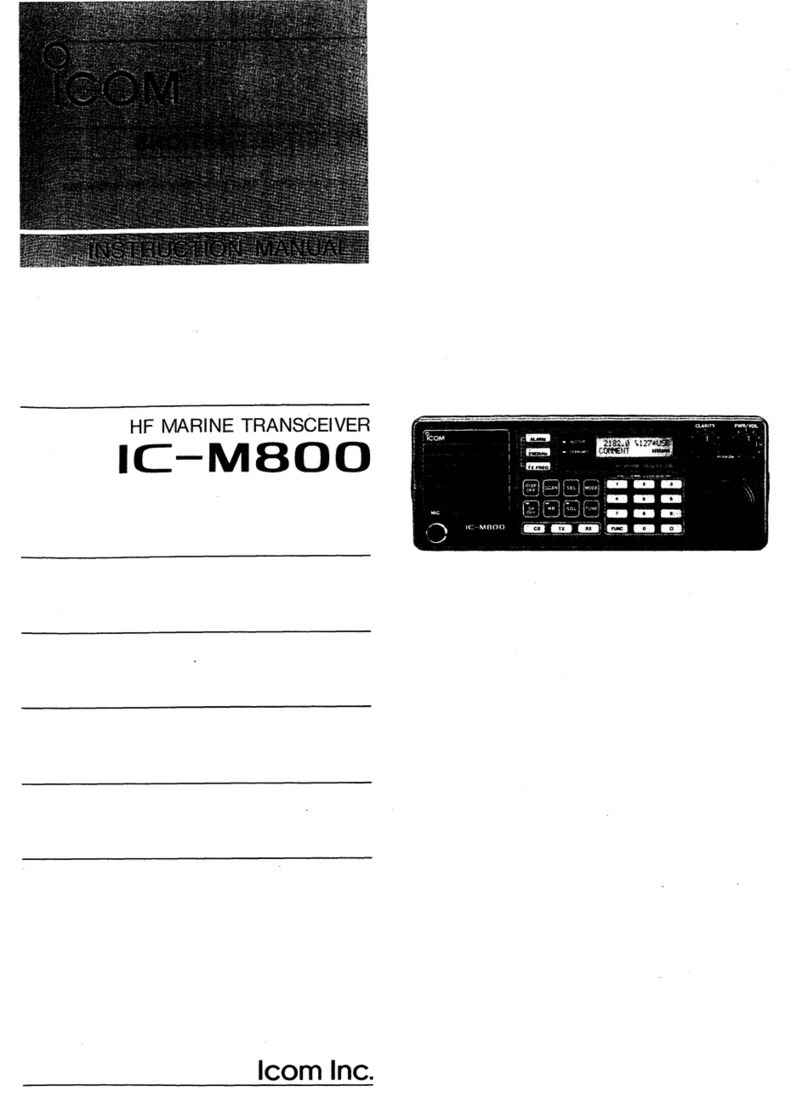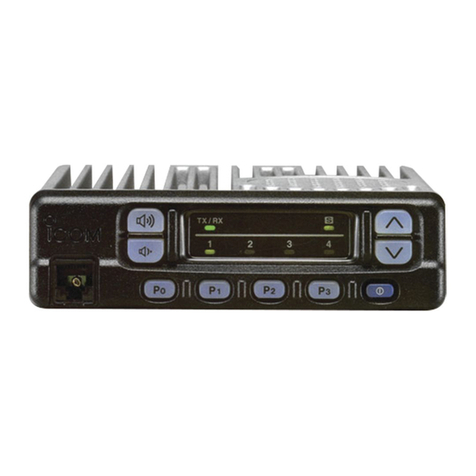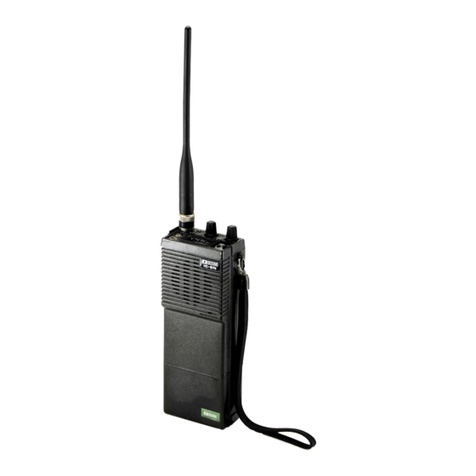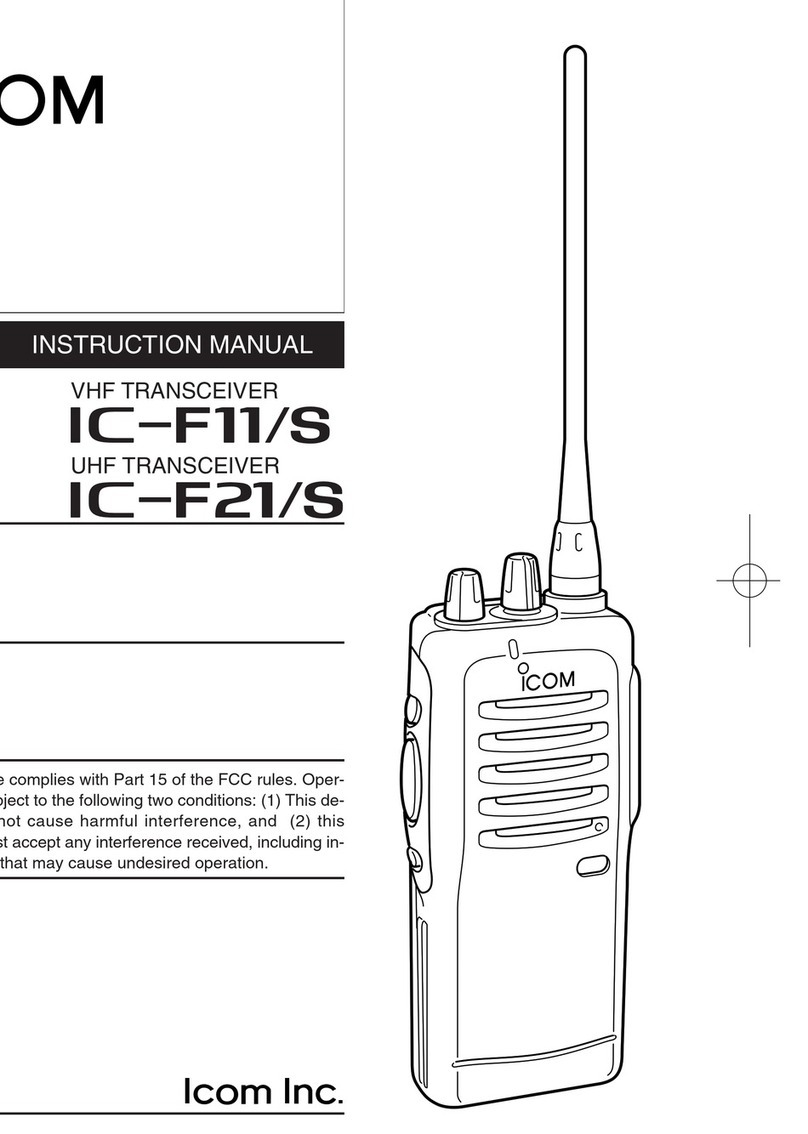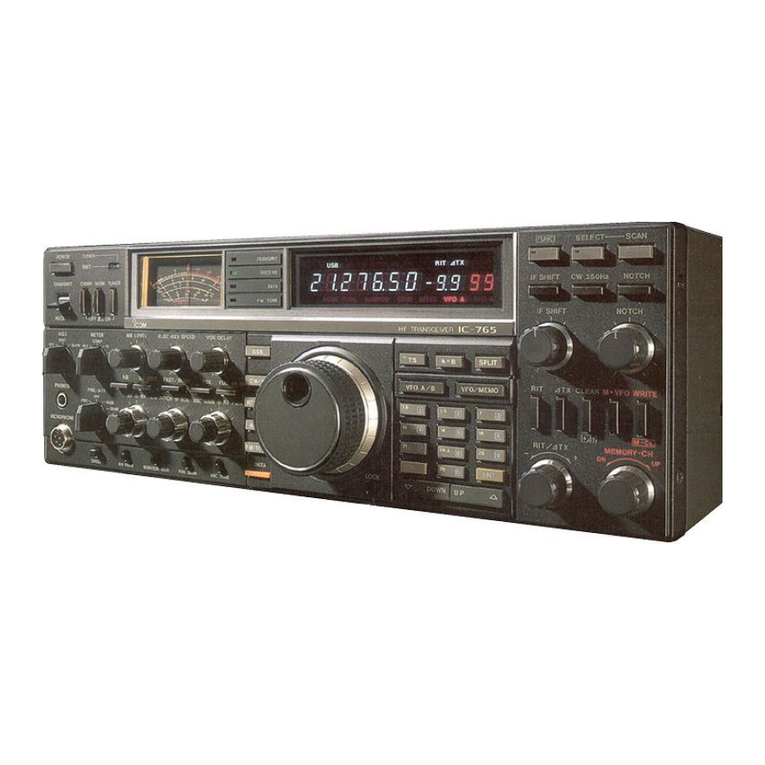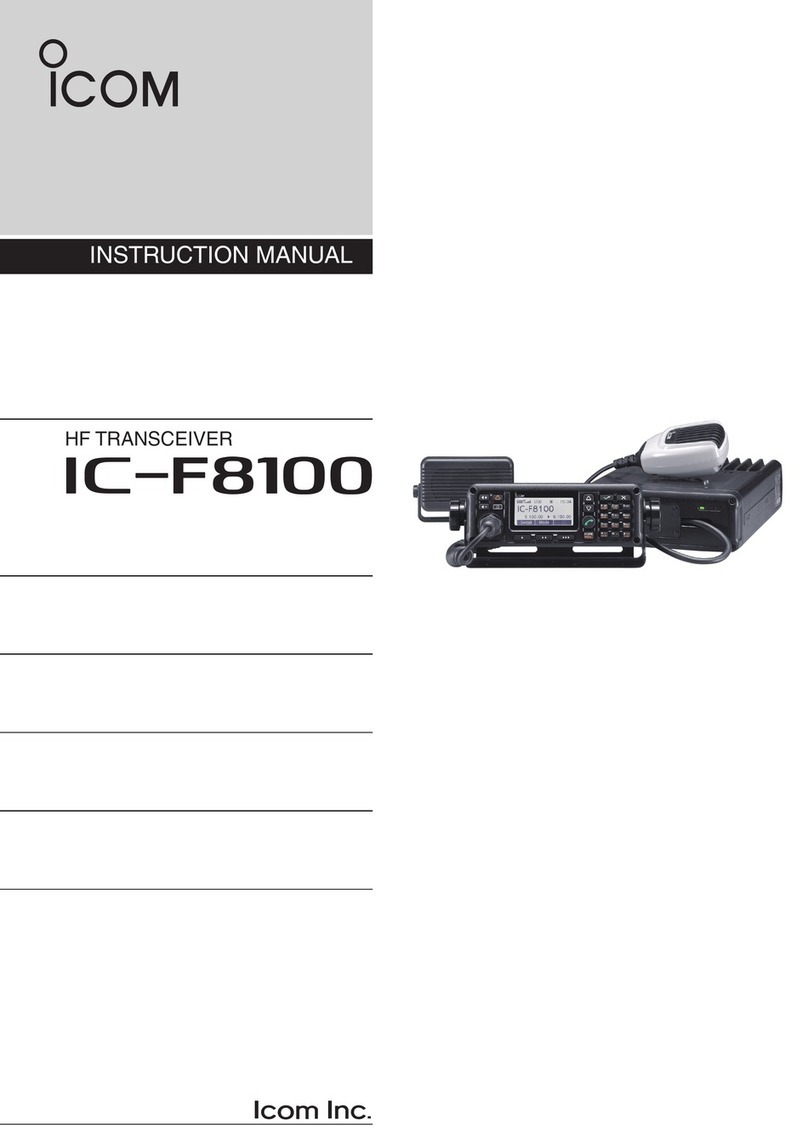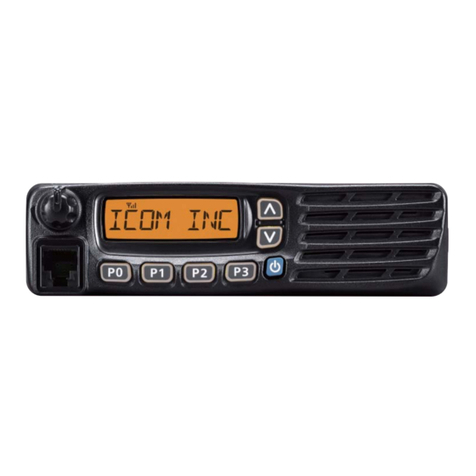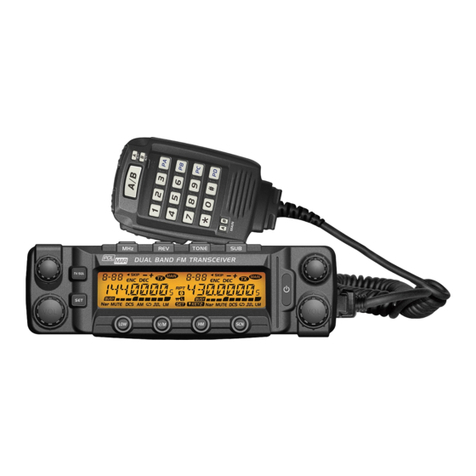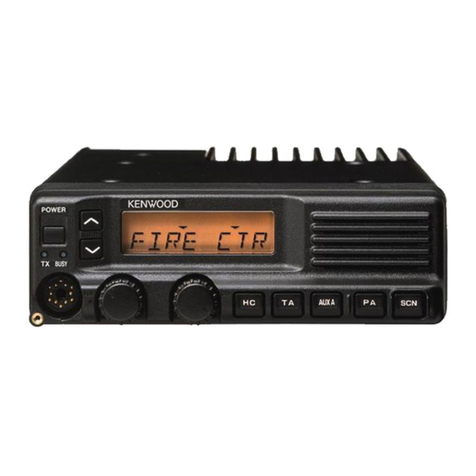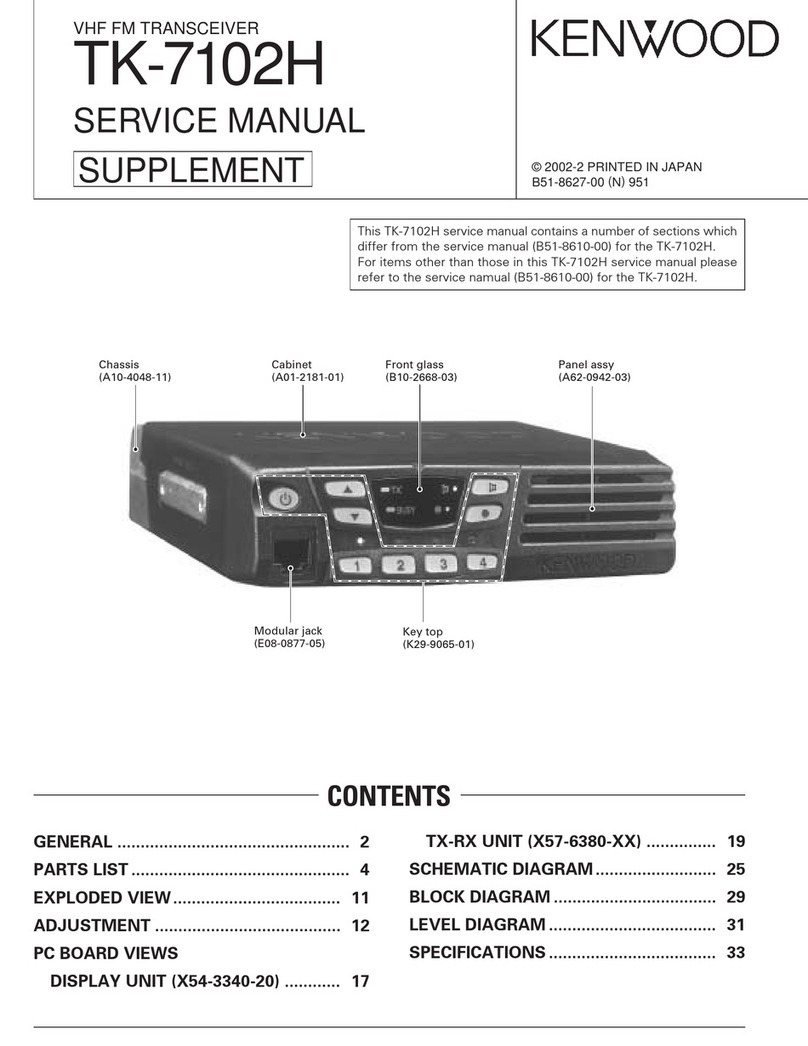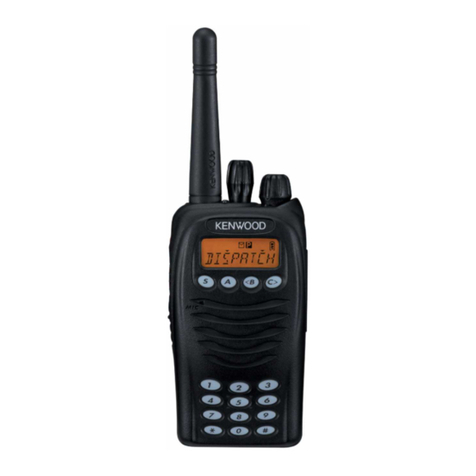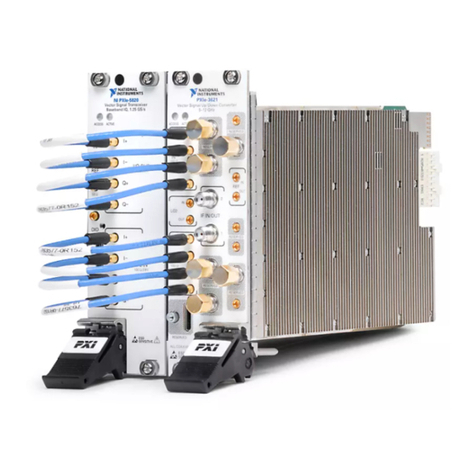
•
In
the transmit mode the meter has
two
functions which
are selected by the Meter Switch (18). They are
as
follows:
Po; Indicates the relative
output
power.
SWR
can be
measured by placing
the
switch located inside the
top
cover
to
the
SWR
position.
ALC;
In
this position the meter functions when the RF
output reaches a certain level.
18. METER SWITCH
Selects meter function
in
the transmit mode.
19. TRANSMIT INDICATOR
Illuminates when the transceiver
is
in
the transmit mode.
20. FREQUENCY DISPLAY
The frequency
of
the IC-730
is
displayed on a luminescent
display tube. Since the 1
MHz
and 1
KHz
decimal points are
displayed, the frequency can easily be read. The frequencies
indicated are the carrier frequencies
of
each mode
in
AM,
USB,
LSB
and
CW.
Remember, if you turn the R
IT
SWITCH
ON
to
change the
receive frequency and rotate the RIT CONTROL knob, the
frequency displayed will not change.
21. NORMAL/SPLIT (TRANSCEIVE/SPLIT) SWITCH
Selects the relationship
of
the two VFO's.
In
the
NORM
(out) position, one VFO
is
for both transmit and receive.
In
the SPT (in) position, one VFO
is
for transmit and
the other
is
for receive.
22. VFO
SWITCH
You can select either of the built-in two VFO's with this
switch.
It
also selects the relationship
of
the two VFO's
with the NORMAL/SPLIT switch. The switch performs the
following operations according
to
its position.
A.
(NORMAL) Selects the
"A"
VFO for both transmit and
receive.
A.
(SPLIT) Selects
"A"
VFO for receive and
"B"
VFO
for transmit.
B.
(NORMAL) Selects the
"B"
VFO
in
both transmit and
receive.
B.
(SPLIT) Selects
"B"
VFO for receive and
"A"
VFO
for transmit.
23. TUNING RATE SWITCHES
The small vernier marks
on
the tuning knob are changed
to
correspond
to
10Hz, 100Hz
or
1KHz steps which
is
selected
by pushing
the
switch either 10Hz, 100Hz
or
1
KHz.
2-3
24. DIAL
LOCK
SWITCH
After the IC-730
is
set
to
a certain frequency for rag
chewing, mobile operation, etc., push the DIAL
LOCK
switch the VFO
is
electronically locked
at
the displayed
frequency, thus inactivating the operation
of
the tuning
knob. To change frequency, the dial lock must first be
disengaged by pushing and releasing the DIAL
LOCK
switch
again.
25. RIT SWITCH
Switches the RIT circuit
ON
and OFF.
26. RIT CONTROL
Shifts the receive frequency ±800Hz either side
of
thetrans-
mit frequency. When
the
RIT
is
ON, the RIT INDICATOR
is
illuminated. Rotating the control
to
the (+) side raises
the
receive frequency, and rotating
to
the
(-)
side lowers
the
receive frequency. The frequency shifted by turning
the RIT Control
is
not
indicated on the frequency display.
27. RIT INDICATOR
Illuminates when R
IT
is
turned ON.
28.
BAND
SWITCH
The
BAND
SWITCH
is
an
11
position rotary switch used for
selecting one of the 500KHz segments. The selectable bands
are 3.5KHz, 7MHz, 10MHz, 14MHz, 18MHz,
21
MHz,
24MHz and 28MHz. (28MHz band
is
separated
to
four
500KHz segments.)
29. PASS-BAND SHIFT (TUNING) CONTROL
Allows continuous shifting
of
the pass-band from upper or
lower side
in
SSB
and
CWo
This
will
reduce interference by
a nearby signal. When the optional crystal filter F
L-3O
is
installed, this control allows continuous tuning
of
the
pass-band selectivity by moving
the
filter up
to
800Hz from
the
upper
or
lower side
in
SSB
and
CWo
Not only improves
selectivity, but also can improve the audio tone. Normal
position
is
in
the center position and
is
2.4KHz wide
in
SSB.
CONTROLS
UNDER
THE ACCESS COVER
30. SPEECH PROCESSOR
SWITCH
Switches the speech processor circuit
ON
and OFF. This
circuit enables greater talk power and better results
in
DX
operation.
31.
SWR
SWITCH
When measuring SWR, calibration SET and
SWR
reading
functions are selected with this switch. When reading
SWR
make sure the METER switch on
the
front panel
is
in
the
RF position.
32.
SWR
SET CONTROL
This control calibrates the meter needle
to
the
SWR
SET
position when you want
to
determine the value
of
SWR.
The METER switch must be
in
the
RF position and the set
must be transmitting a carrier.
for
free
by
RadioAmateur.eu




















